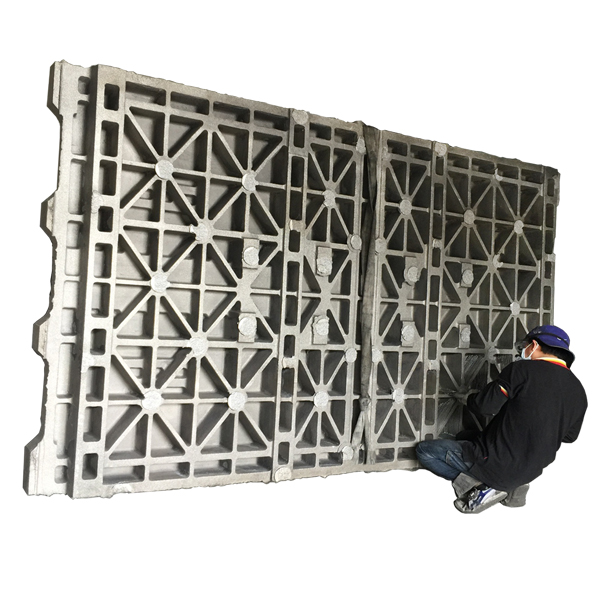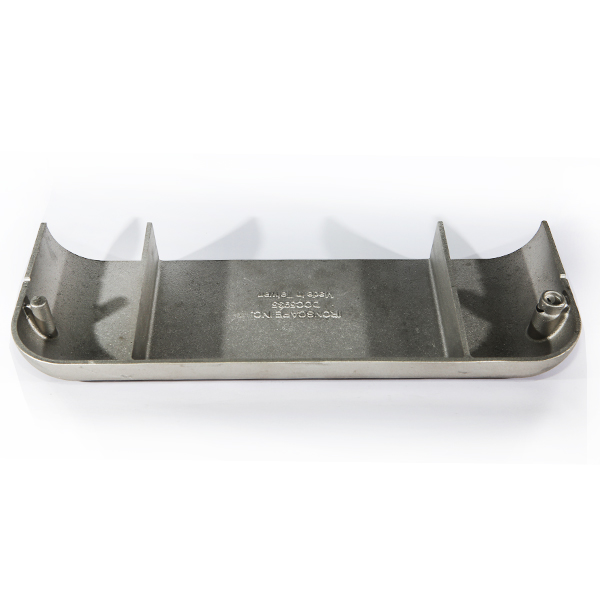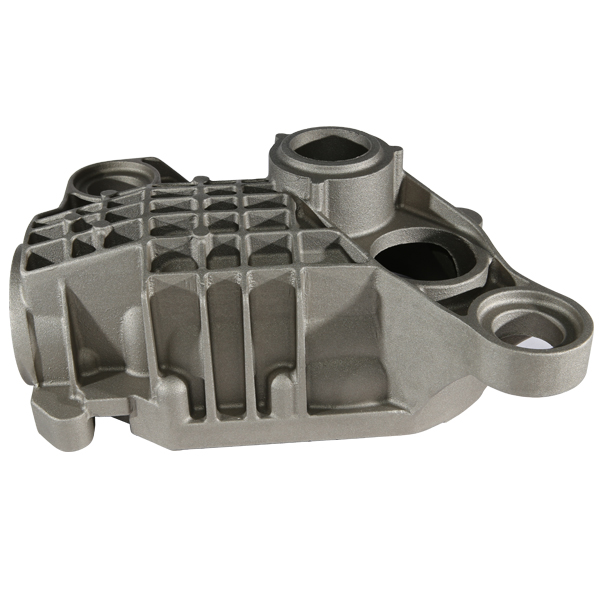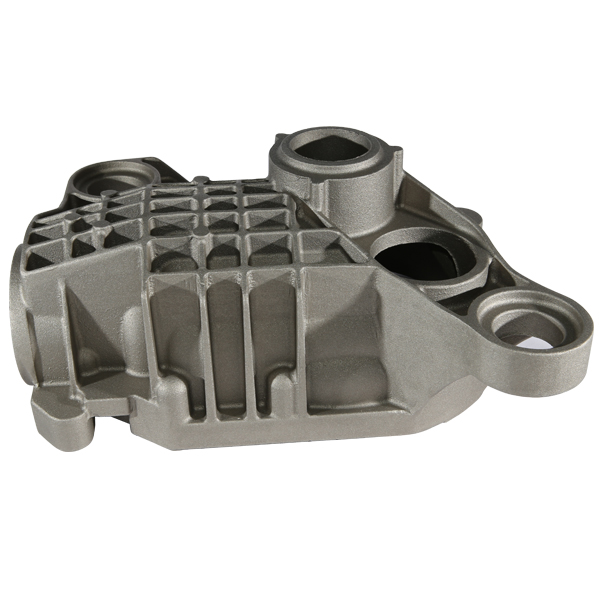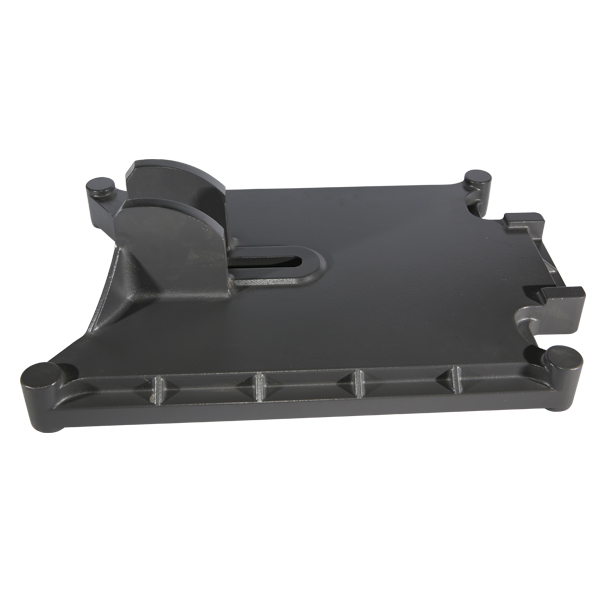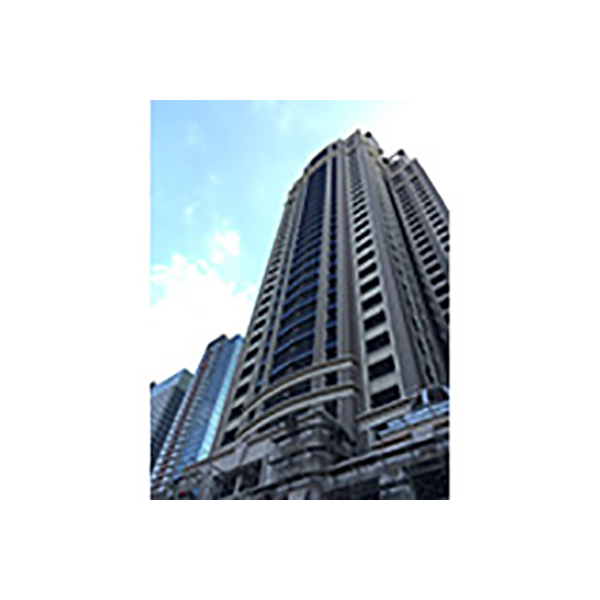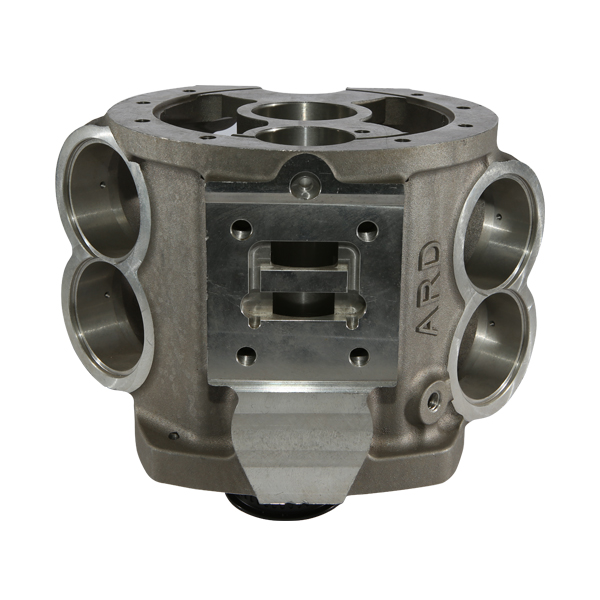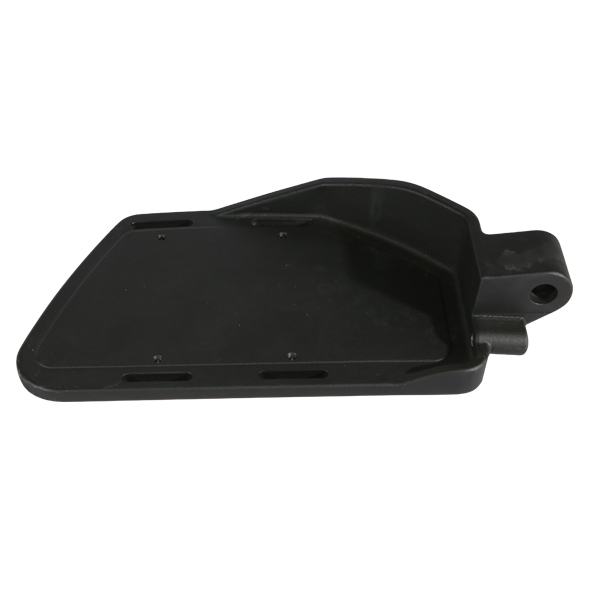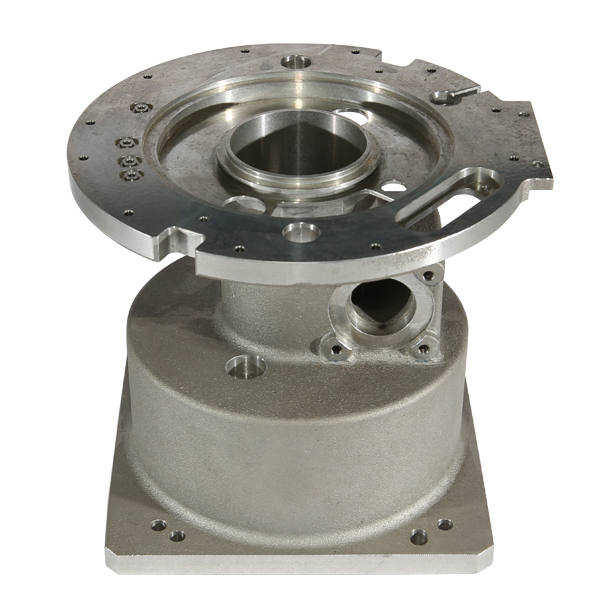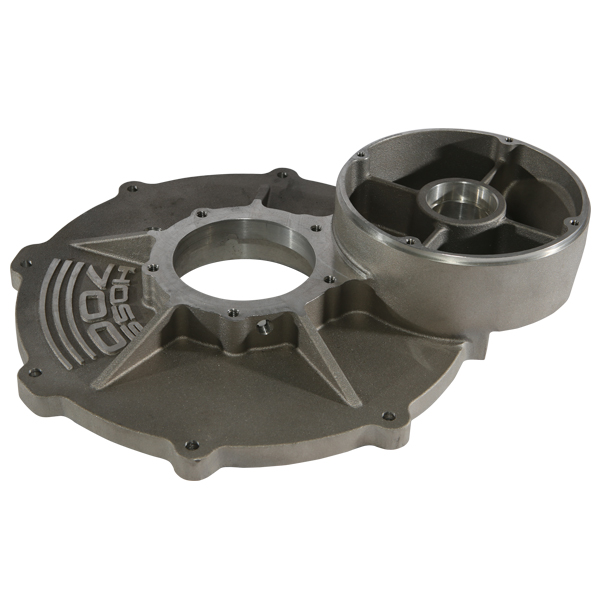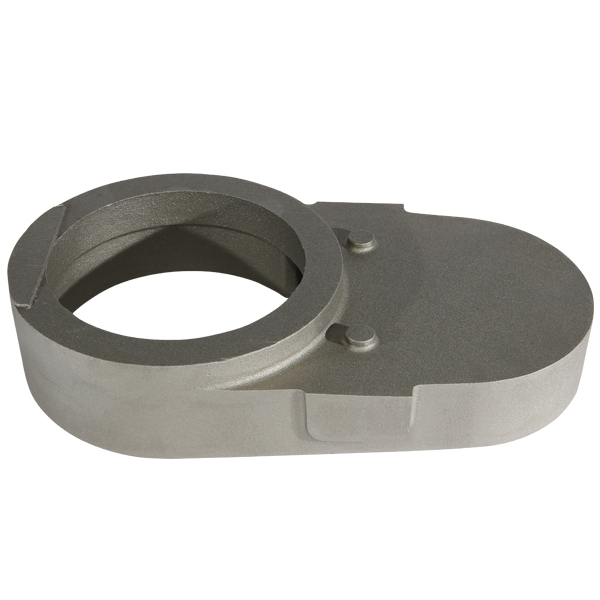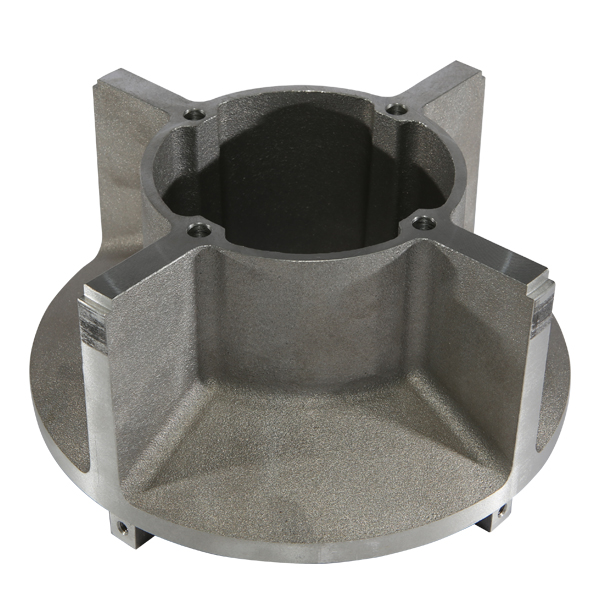Introduction to Aluminum Alloy Sand Casting and Gravity Casting
Aluminum alloy casting is a manufacturing process that involves melting aluminum alloy and pouring it into specific molds. After cooling, the desired parts are formed. Aluminum alloys are preferred for casting due to their lightweight, high strength, and excellent thermal conductivity.
Common methods of aluminum alloy casting include gravity casting and sand casting:
Sand Casting:
Sand casting, also known as sand mold casting or sand molding, involves creating a sand mold with the desired cavity shape in a special sand box. Molten aluminum alloy is then poured into the sand mold. Once the metal cools and solidifies, the formed casting is removed.
Sand casting offers flexibility and versatility, allowing for different shapes and sizes. It allows for design adjustments and changes during the casting process. Compared to other casting methods, sand casting has lower mold production costs and can be reused multiple times. For large parts, dedicated molds can be costly, but sand casting provides a relatively economical solution, making it suitable for producing large and medium-sized aluminum alloy parts.
The drawbacks of sand casting include shorter mold life, requiring regular replacement and maintenance. This may increase production costs and downtime. Sand casting has a slower production speed and slightly lower surface accuracy compared to gravity die casting.
Die Casting:
Gravity casting, also known as die casting or gravity die casting, involves pouring molten aluminum alloy into a die or mold using gravity and high pressure to fill the mold cavity. The metal is rapidly cooled and solidified. Gravity casting offers high precision and the ability to produce complex-shaped aluminum alloy parts with excellent dimensional control and surface finish. It eliminates the need for further machining or trimming, saving time and cost. Another advantage of gravity casting is its high production efficiency, making it particularly suitable for large-scale aluminum alloy part manufacturing.
In addition to the above advantages, gravity casting can produce parts with integrated structures, reducing the need for assembly and welding. It is also suitable for producing smaller castings with intricate and thin-wall structures.
However, gravity casting has some drawbacks. Firstly, the production cost of casting molds is higher, requiring special mold design and manufacturing processes. Secondly, it requires larger die-casting machines and corresponding facilities, resulting in significant equipment investment. Additionally, gravity casting is not suitable for large castings, limiting its application for some large structural components.
Aluminum alloy gravity casting is an efficient casting method for producing high-precision and complex-shaped aluminum alloy parts. Despite some drawbacks, it remains one of the widely used aluminum alloy casting technologies in various industries.
Therefore, when choosing an aluminum alloy casting method, the specific application requirements, part characteristics, production volume, and cost should be considered to select the most suitable method!
Comparison of Gravity Casting and Sand Casting
| Comparison Table | Sand Casting | Gravity Casting |
|---|---|---|
| Advantages and Features |
|
|
| Disadvantages |
|
|
Aluminum Alloy Material
A356: A356 aluminum alloy is a lightweight material composed of multiple elements. The main components of A356 aluminum alloy are aluminum, silicon, and magnesium, with silicon and magnesium enhancing the strength and corrosion resistance of the alloy. A356 also contains other additives to provide high strength and good toughness, enabling it to withstand external forces and impacts under extreme conditions. It also has excellent fatigue resistance and good machinability, allowing for the production of complex shapes and structures. After heat treatment, the strength and hardness of the alloy can be further improved. However, it is prone to oxidation at high temperatures, resulting in the formation of an oxide layer on the surface, which can affect appearance and performance and comes at a higher cost compared to regular aluminum.
The high strength and lightweight characteristics of A356 aluminum alloy make it widely used in industries such as semiconductors, electronics, and sporting equipment. For example, it can be used for automotive engine blocks, rotors, and fan blades.
Currently, Rong Feng primarily uses A356, and other sand casting materials can be discussed for production based on order quantity.
Applications of Aluminum Alloy Casting
- Automotive Industry: The lightweight properties of aluminum alloys make vehicles more energy-efficient and environmentally friendly, while providing good strength and rigidity. Aluminum alloys are used in engine parts, chassis components, suspension systems, exhaust systems, aluminum wheels, and other parts.
- Aerospace Industry: The high strength and lightweight characteristics of aluminum alloys make them suitable for structural components and engine assemblies, such as aircraft flaps, propellers, and fuselage components.
- Electronics: Good thermal conductivity and corrosion resistance allow for effective heat management and external protection. Aluminum alloys are primarily used in components such as casings, enclosures, and heat sinks.
- Industrial Equipment: Pumps, valves, compressors, and mechanical components benefit from the high strength and excellent corrosion resistance of aluminum alloys, enabling them to meet the requirements of various industrial environments.
- Sporting Equipment: The lightweight and excellent strength of aluminum alloys make them suitable for applications in bicycles, golf clubs, boats, and camping equipment, providing durability and strength.
- Construction Industry: The excellent ductility and machinability of aluminum alloys allow for various complex architectural grid designs. The lightweight and high strength characteristics provide structural stability and support, while the good corrosion resistance ensures long-term appearance and performance in outdoor conditions.
Rong Feng Aluminum Casting Process
To ensure product quality and improve production efficiency, Rong Feng's technical team utilizes extensive experience and profound expertise to establish a rigorous production process. From mold making, casting, pouring, deburring, and sandblasting to the completion of castings, each step is meticulously executed to strive for perfection and provide customers with the best quality.
Examples of Aluminum Alloy Casting
Through exquisite aluminum casting techniques, Rong Feng seamlessly combines industry and art, faithfully presenting design concepts and showcasing the beauty of architecture.
National Taichung Theater in Taiwan - Reflective cast aluminum panels, and Minsheng College Teaching Building at Taiwan Shih Chien University - Perforated window walls, are representative works that combine recent architectural aesthetics with industrial technology.
For over 50 years, Rong Feng has diligently researched casting techniques, deepened market presence, and expanded business from domestic to international markets such as Japan, Europe, and America. With outstanding achievements and the trust and support of customers, Rong Feng is a preferred professional manufacturer of aluminum alloy casting. If you have any aluminum alloy casting needs, please feel free to contact us!
Large Castings
Outdoor Equipment
Car Sand Cast Parts
Cylinder Housing
Machine Bases
Architectural Cast Grille
Car Cylinder
Electric Vehicle Pedal
Precision Parts
Gearbox Cover Casting
Sand Casting Machine Parts
Lighting Fixture Sand Castings


